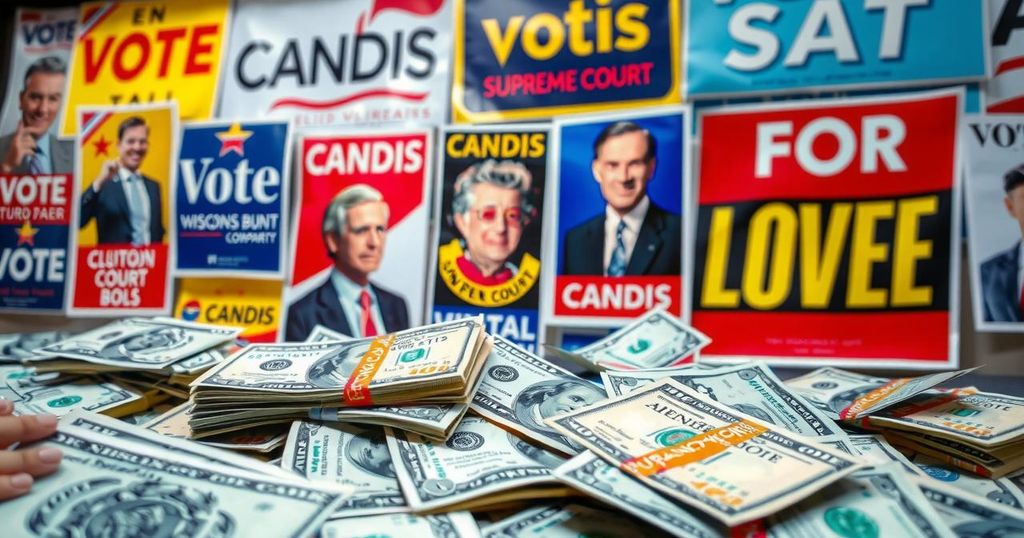Elon Musk’s Influence in Wisconsin Supreme Court Race Drives Record Spending

The Wisconsin Supreme Court race has set spending records with substantial financial contributions from both sides, particularly driven by Elon Musk and prominent Democratic donors. The contest, seen as pivotal for ideological control, has led to a surge in advertising and campaign activities, raising concerns about the integrity of judicial elections amid escalating financial influence. Experts warn about potential repercussions for public trust in the judicial system.
The Wisconsin Supreme Court race has witnessed unprecedented campaign spending as major contributors from both political parties pour millions into the contest. Notably, tech billionaire Elon Musk has assumed a significant role in this electoral battle, leveraging his influence and financial resources to support candidates, especially in the lead-up to the midterms in 2026. Musk’s personal contributions along with those from super PACs he funds have exceeded $20 million ahead of the high-stakes election scheduled for April 1.
Musk’s financial involvement highlights the considerable impact he can exert on political campaigns. Recently, he announced plans to visit Wisconsin for an event where he will award million-dollar giveaways to individuals participating in his super PAC’s initiatives, echoing strategies from previous elections. Meanwhile, Democratic mega-donors such as George Soros and JB Pritzker have similarly mobilized financial resources to influence the race, with Soros contributing $2 million to the state Democratic Party.
This year’s spending has surged past $70 million, shattering previous records for judicial elections, which included investments from PACs and untraceable funds. Supporters of the liberal candidate, Susan Crawford, outpaced those of the conservative candidate, Brad Schimel, by approximately $7 million in advertising expenditures.
Crawford’s campaign reported raising over $17 million in a short span, highlighting the intense fundraising dynamics of this election cycle while emphasizing issues such as abortion rights that resonate with voters amid national debates. Concurrently, Musk’s financial maneuvering, including contributions to the Wisconsin GOP, positions him as a formidable player in the election.
Both candidates have grappled with the influx of outside funding. Crawford expressed concern over Musk’s dominance in Schimel’s campaign messaging, while Schimel contested Crawford’s ties to Soros. This contentious race has expanded beyond traditional judicial election battles, evolving into a significant political conflict reflective of broader ideological divisions.
As the election approaches, the advertising strategies from both sides have intensified, addressing key topics such as abortion rights and public safety. Pro-Crawford advertisements highlight fears regarding Schimel’s stance on health care decisions, while Schimel’s campaign targets Crawford’s judicial record on crime. The escalating spending trends indicate a potential doubling of the previous record, with predictions estimating total campaign expenditures might reach $100 million.
The flood of campaign funding raises concerns about public trust in the judicial system. Experts suggest that the excessive financial involvement in judicial elections blurs the lines between judicial impartiality and political agendas, potentially undermining the public’s perception of judges as neutral arbiters.
The Wisconsin Supreme Court race is marked by record-breaking campaign expenditures from influential donors, particularly Elon Musk, as both parties invested heavily to sway the outcome. This contest underscores the shifting dynamics of judicial elections, where outside funding increasingly shapes political narratives. While the financial stakes are unprecedented, there are growing concerns about the implications this influx of money may have on public trust in the judiciary, further blurring the boundaries between law and politics.
Original Source: www.cnn.com






